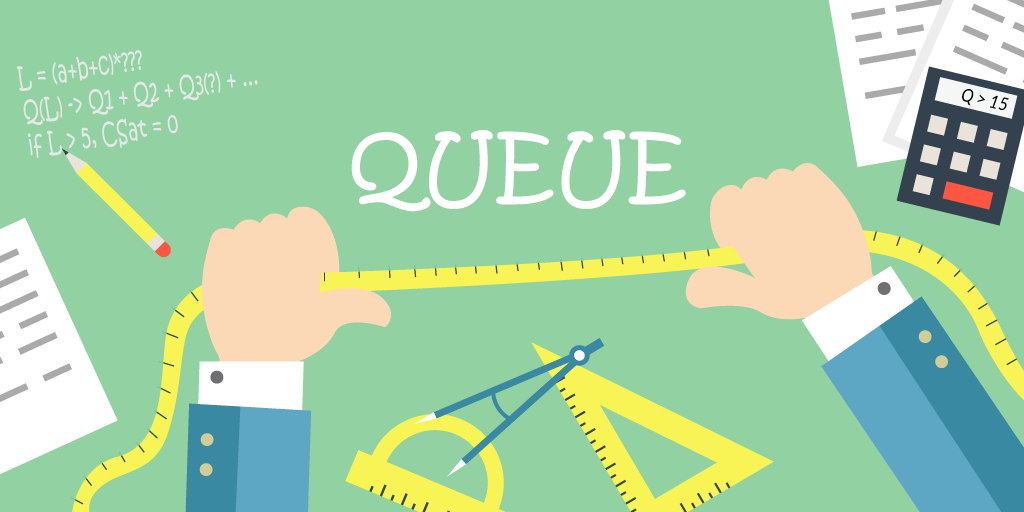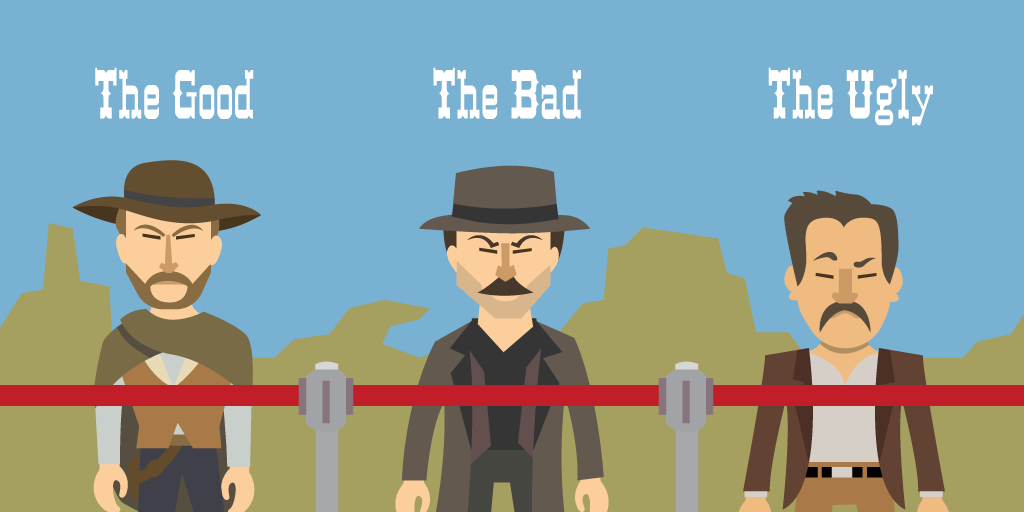Today we’re going to take a tour of various industries and how queue management systems (QMS) improve the experience for both customers and employees, from specialty retail stores to the healthcare sector.
By understanding how queue management system features help particular industries we can see how QMS helps other businesses as well.
Because, ultimately, the goal of any QMS is not only to create a better customer experience but create a better business.
How Retail QMS Gives Customers Their Time Back
Did you know most people find waiting in line to be torture? Nearly 50% of surveyed consumers report feeling very irritated by waiting in line.
And that’s awful, since Americans spend roughly 37 billion hours each year waiting in line. We’re here to find a solution.
Luckily for the modern age, retail queue management systems free up customer’s time by removing the line altogether.
Instead of waiting in line to sign-up to be served, customers use a kiosk to type in their name. The customer is then added to a digital queue. Once it’s the customer’s turn to be served, their name will be called.
Bringing Window Shopping Inside the Store

This system can also benefit the business’ bottom-line How? Well, curious browsing can lead to impulse purchases.
Let’s say you’re looking for that perfect anniversary diamond necklace.
What’s a better use of your time: Waiting idly for an employee’s assistance? Or, browsing the store on the hunt for the perfect gift?
QMS restores autonomy to the customer. Customers are free to move about, and entertain themselves by absorbing the various products in the store.
What we’re highlighting is a happy consequence of queue management system features: a means of empowering both customers and employees.
Our wandering customer spots the perfect lapis lazuli while waiting for assistance. Now he’s honed in on his desired purchase. He can then ask an employee about the semi-precious stone once he sees it’s his turn on an HDTV, or he can make a purchase right then and there.
The time spent window shopping helps customers internally negotiate what they want from the store, freeing up their time and employees’ time who then have more time to help additional customers.
QMS gives customers in-store freedom, which benefits both customers and employees.
The Convenience of QMS In Food Courts
Kids know that the best time to eat a slice of mother’s homemade chicken parmesan is when it's fresh out of the oven. Outside of childhood homes, it can be difficult to find efficient cooking.
Sometimes when we order food we walk away, distracted by a storefront or maybe a familiar face. By, the time we walk back to the food court, our food is ready and waiting but it's no longer piping hot.
With QMS food courts can ensure that customers receive their food at just the right time.
Every table along the corridors of Newark International Airport is accompanied by a tablet: “an iPad at every seat, for a total of 6,000 tablets in the 100,000-square-foot terminal.”
From the tablet, soon-to-be flyers not only browse the web, catch the news, and check updates for their flight, but they can also order food and beverages.
At the click of a button, an order is placed and the food or beverage (probably alcoholic) is delivered by a server. Servers don’t need to negotiate sorting various orders, nor do they need to worry about moving from table to table as guests come and go.
The kiosk allows cooks and servers to take on the maximum number of orders at any one time, and deliver them on a first-come, first serve basis. That means faster orders for customers and a bigger bottom line for bars and restaurants.
And here’s a bonus for businesses. Not only are they able to serve more efficiently but the Newark Airport terminal saw 50% more revenue than half of the top 50 airports in North America.
How QMS Improves Wait Times In Hospitals

Hospitals are notorious for testing their patient’s patience: the average wait time to see a doctor is a staggering 18.5 days. With that long of a wait, it can feel impossible to finally find out what that odd growth is.
The problem isn’t with doctors or staff, it’s appointments.
Dr. Anthony Youn told CNN, “ One-third of my patients arrive for their appointments at least 10 minutes after their scheduled time. New consultations often arrive as much as 20 or 30 minutes late.”
One study found that 42% of patients skip their appointments. That means for nearly every patient that does show up, there’s likely a scheduled patient who didn’t. Meanwhile, the average cost of a no-show was $196 per patient in 2008.
No wonder appointments quickly become confusing and messy.
How Data Collection Changes the Paradigm
With QMS hospitals can embrace walk-ins and improve their patient's experience.
How? Thanks to analytics. Queue management systems automatically collect patient data:
How many patients arrive on a daily basis?
How long do patients typically wait before seeing the doctor?
How do patients feel about the experience?
The collected data, called footfall analytics, is used to understand patient behavior, discover inefficiencies, and average wait times. Hospitals then utilize that data to hone in on creating a faster, more timely experience.
How Governments Create A Personal Touch With QMS
Governments are notoriously mocked as impersonal, cold, and calculating, i.e. disinterested bureaucracies. But it doesn’t have to be that way.
Queue management systems not only modernize governments, but turn them into an environment where it's clear government serves the people.
Fostering a Communal Environment

The Department of Motor Vehicles (DMV) is nightmare fuel for most Americans. But QMS scares those bad dreams away.
After customers sign-in at the QMS kiosk, they see their name on an HDTV located on one of the interior walls. They’re part of a digital line, that tells you who’s in front of you and who’s in back:
Eventually, you hears your name called. Your full name.
Did you know that hearing your name activates particular areas of the brain? And those areas of the brain light up in response to intimacy.
Hearing our names called is a recognition of our individual humanity. It goes a long in fostering positive connections between people.
(That’s a bit of trivia you can carry into your next boardroom meeting when trying to persuade your peers.)
Understanding People’s Needs
Additionally, if set up, customers like Mary will be asked to indicate why they’re at the DMV at the sign-in kiosk. Maybe it’s to renew a license, or apply for a permit, or finally get that coveted motorcycle license.
Regardless, front-end employees see Mary’s reason for her visit and can assign staff that best meet Mary’s needs.
Using your name to sign-in and announcing why one is making the visit creates a sense of agency, an empowered individualism. A queue management system feature is that customers feel like people.
Instead of an experience mandated by government edicts, customers away with a sense of community.
How Banks Use QMS to Improve Efficiency
Lines at banks are notorious for being inefficient messes. Customers can end up waiting for more than 20 minutes, and sometimes up to 40 minutes.
Those inefficiencies can be rectified with a queue management system.
After signing in with their name, customers are free to take care of business. Their time is their own, so they can write a deposit slip, check their account online, etc., just like our aforementioned jewelry hunter.
But here’s the additional twist.
Not only are customers given a more efficient queuing experience, but banks don’t have to worry about setting up the system.
QMS like Qminder arrives all set up and ready to go. There’s no hassle in installing the QMS; everything runs on cloud software. It’s simple to install and simple to use.
Bank employees simply login into the system and manage all of the data and clients from a single hub.
And that means a more efficient queueing process and positive experience for everyone.
How Virtual QMS Solves Customer’s Problems

QMS doesn’t just make lives easier in-person but is utilized online as well.
Most of us have dealt with customer service over the internet in one form or another.
Sometimes we end up explaining our issue to a dozen people before finally finding the representative who can assist us.
A virtual QMS system connects customers with the support they need.
At the same time, if a customer is bounced from one technician to another, all of their data goes with them. So there’s no need to waste time asking customers to describe their issue all over again.
Customers get the service they need and customer support can focus on providing support to as many people as needed.
QMS offers powerful tools which inform businesses on how to improve their logistics and offer the best possible service.
No matter what industry we find QMS in, it ultimately boils to using the system to improve the customer’s experience.
You can see for yourself by trying Qminder, free for 14 days, with no limitations. No need for a credit card either. You’ll have access to every feature and can discover how Qminder can benefit your business.






